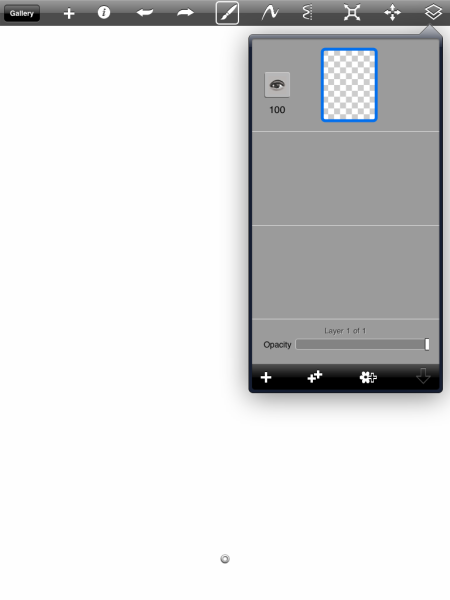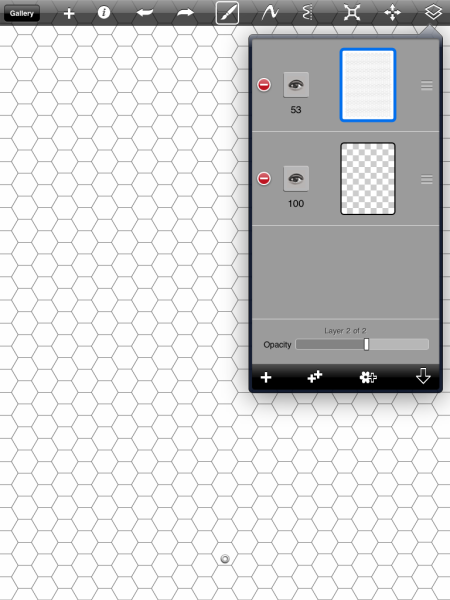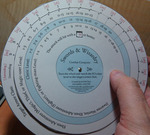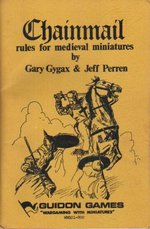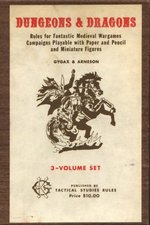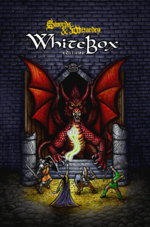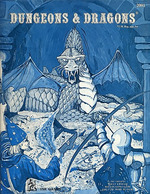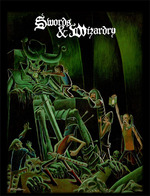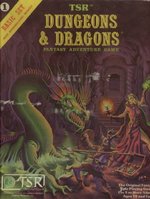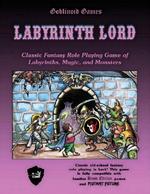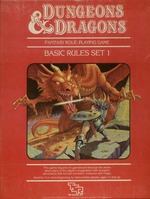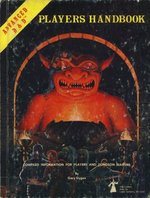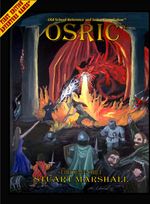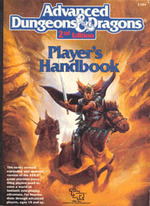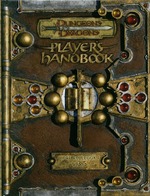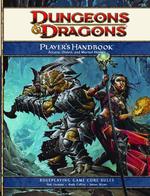So looking at the classic OD&D rules, I have been mulling over something that bugs me. For classes, you have Fighting-man, Magic-user, and Cleric. Each of these constitutes a fundamental way of accomplishing tasks, (Looking at these from the perspective of 4E, each is a Power Source.) So while a Fighting-Man approaches tasks in a physical way, a Magic-User approaches it in a magical way, and a Cleric uses their god’s divine influence to get it done. Meanwhile, the demi-human classes are different mechanical interpretations of the core three classes.
On the other hand, Thievery is kind of the odd man out. It seems to me that being a thief is not a mechanical difference, but more a lifestyle choice.
Thinking back to the Fafhrd & The Grey Mouser stories, which were one of the big inspirations for D&D, Fafhrd was a barbarian fighting-man who acted more like a thief. And the Grey Mouser was trained as a wizard but had also chosen the life of a thief. Yet in the basic rules there is no way to recreate either of these characters.
As the class is written, they are like weak fighting-men who have an additional sub-mechanic of thief skills and some other tricks. But they still are assumed to approach their tasks in a physical manner, but just in a less directly way.
So could you have a magic-user thief, who wasn’t a multi-class or hybrid of the two, but instead a magic-user who used his magic to steal. And how about if you created a cleric of the patron god of thieves? Shouldn’t he also be motivated to be a thief, but would rely on his god to get past guards and open locks?
So this got me to wondering if the thief class is really just a template that can be applied to one of the core classes. Actually also then would the other later classes (Monk, illusionist, Druid, etc) are not full on classes, but instead just a particular template applied to a core class.
Thief = Fighting-man + Criminal Template
Druid = Cleric + Nature Template
Monk = Cleric + Ascetic Template
…and so forth. Psionics could also be a template. And in fact so could the demi-human classes. I am seeing a template as being a set of powers or advantages they get, but also there would be associated restrictions and other negatives. If they take more then one template for their character, then these would all stack.
I can see this as add on book for OD&D with these different templates, almost like a recipe book. The DM would have the players describe an idea for their character, and then he would look up and see what template(s) he would permit to get close to their idea mechanically. (I suspect this is the sort thing that DMs houserule all the time- for instance the new player REALLY wants to be a pirate, so the DM gives them some some extra pirate stuff their Fighting-man can do.)
The first question that would need to be addressed is can you stack templates, and if so how many is the limit. (To avoid the “Dwarven Cleric thief who is also Psionic” uber character) I think that it should be up to the DM to make the call, and also they can assign stiffer negatives to the templates if they are worried about balance.
I also wonder how close this gets to just having multiclass characters, or if this is just trying to subvert OD&D into being something closer to AD&D. (and if so, why not just play AD&D?)
I think the difference is that a template can be anything- it can cover specialized classes, but also cover GURPs style Advantages and Disadvantages or 4E backgrounds. (Raised by wolves be a template, or being Ambidextrous.)
The big mechanical question is over the advancement charts. The demi-humans have a level cap, and the 3 classes advance at different rates through their levels. It seems like a template can put a level cap on a character, but it should not mess with the core class’s advancement rate. For the Dwarves Cleric Thief with Psionics, despite all their limitations, and level cap, they should still use the Cleric charts, because it should still feel like a cleric.
So back to the Thief, if it were a template instead of a class, then the PC would still get their thieves ‘skills’ using the same rolls. But depending on their base class, the ‘fluff’ text on how they do it would change. And rather then having their own advancement chart, they would use their core class’s chart but might have a level cap. And finally they would also have the weapon and armor restrictions which would be superseded by their core class if its more restrictive. (One advantage of some templates would be that they negate a restriction on a core class- so if a Cleric took the ‘evil cultist template’ option, then suddenly they would no longer be restricted to blunt objects- and could wield a sacrificial dagger in the service of their dark god.)
